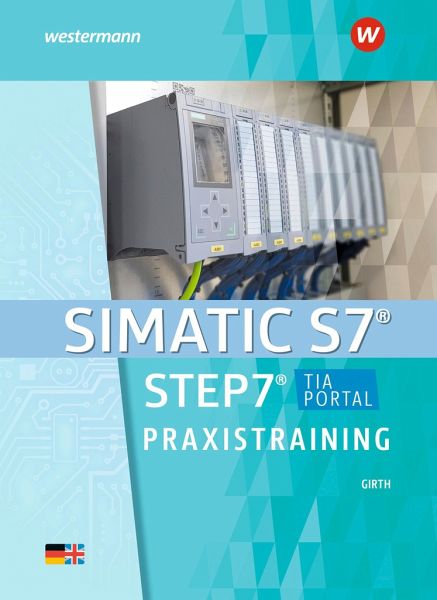

- SIEMENS STEP 7 SYSTEME DE POMPAGE MANUALS
- SIEMENS STEP 7 SYSTEME DE POMPAGE INSTALL
- SIEMENS STEP 7 SYSTEME DE POMPAGE MANUAL
- SIEMENS STEP 7 SYSTEME DE POMPAGE TRIAL
- SIEMENS STEP 7 SYSTEME DE POMPAGE DOWNLOAD
You only require one language type for programming an S7-300/S7-400, but you can mix the languages within a project, if required.
SIEMENS STEP 7 SYSTEME DE POMPAGE MANUALS
Statement List, Ladder Logic, and Function Block Diagram Reference Manuals - These manuals contain both the user’s guide and the reference description of the programming language or representation type. SIEMENS STEP 7 SYSTEME DE POMPAGE MANUAL
Configuring Hardware and Communication Connections STEP 7 Manual - Everything to do with the Hardware Configurator. Programming with STEP 7 Manual - Here’s the fuller manual for the programming interface which is also the same as the online help accessed by pressed the F1 key. While it’s not the complete picture it does ease you very well into the learning curve of the Step 7 software. Working with STEP 7 - This is a basic introduction to Step 7 which walks through an example of controlling engines. Hard copies can be ordered with number 6ES7810-4CA08-8BW1. SIEMENS STEP 7 SYSTEME DE POMPAGE INSTALL
Once you install the Step 7 software there will be a directory under the SIMATIC folder called Documentation that includes the most important manuals.

Where to Start? Manuals, manuals, everywhere! The best thing for this is the sales catalog (ST 70 – 2005). Getting used to part numbers and product groupings can go a long way with your comfort level. The first thing I like to do with a new product is get an overview of everything. There are differences between the regular version of Step 7 and Step 7 Lite but for learning purposes you can go along way with the free Lite version.
SIEMENS STEP 7 SYSTEME DE POMPAGE DOWNLOAD
Download a free working copy of Step 7 Lite. SIEMENS STEP 7 SYSTEME DE POMPAGE TRIAL
Order the demo CD which will give you a free 30-day trial period. If you are just learning and can’t easily get the software then there are two options. Of course the best type of training is the hands on type but if that’s not an option then you’ll need to start digging in. So we’ll look at the essentials for your journey. There’s a lot of different stuff there thrown together and found in different spots with very long URL addresses to add to the confusion. From a new users perspective I’ve only heard disparaging comments about finding the right information on the Siemens’ website. In addition, an oil separator(120,130) or an oil collection pipe(121,131) is installed at the outlet sides of the compressors or an oil balancing pipe(221) and an oil balancing valve(222) are installed between the compressors, so as to uniformly maintain an oil amount between the compressors.This is a listing of tutorials and manuals found on the Siemens automation website that will get you started on the SIMATIC Step 7 software for S7-300 and S7-400 systems. Also, a backflow prevention valve(20) is installed between the primary and secondary compressors to prevent an increase in pressure of the secondary compressor, or an auxiliary heat exchanger(30) is installed at the outlet side of a second evaporator(15) with high temperature to allow heat exchange of an inlet side pipe(L1) of a first evaporator with low temperature so as to shift a load of a freezing chamber into a relatively large refrigerating chamber, thereby improving efficiency of the refrigerator. A primary compressor(11) and a secondary compressor(12) can form independent cycles together with corresponding evaporators(14,15) so as to reduce unnecessary power consumption. Thus, the controller can perform the operating control of the supercooling compressor (221) without exchanging signals with the refrigerating device to be installed.Ī refrigerator and a driving method thereof are disclosed. The controller (240) performs the operating control of the supercooling compressor (221) based on information obtained in the supercooling unit (200) by utilizing input signals from these sensors (234, 236). 
The detected values of a suction pressure sensor (234) and a refrigerant temperature sensor (236) are inputted into the controller (240) of the supercooling unit (200). When a supercooling compressor (221) is operated, a supercooling refrigerant is circulated in a supercooling refrigerant circuit (220), a refrigerating cycle is performed, and the refrigerant of the refrigerating device (10) flowing in the refrigerant passage (205) is cooled.

In the supercooling unit, a refrigerant passage (205) is connected to the liquid side communication pipes (21, 22) of a refrigerating device (10). A supercooling apparatus, comprising a supercooling unit (200).








 0 kommentar(er)
0 kommentar(er)
